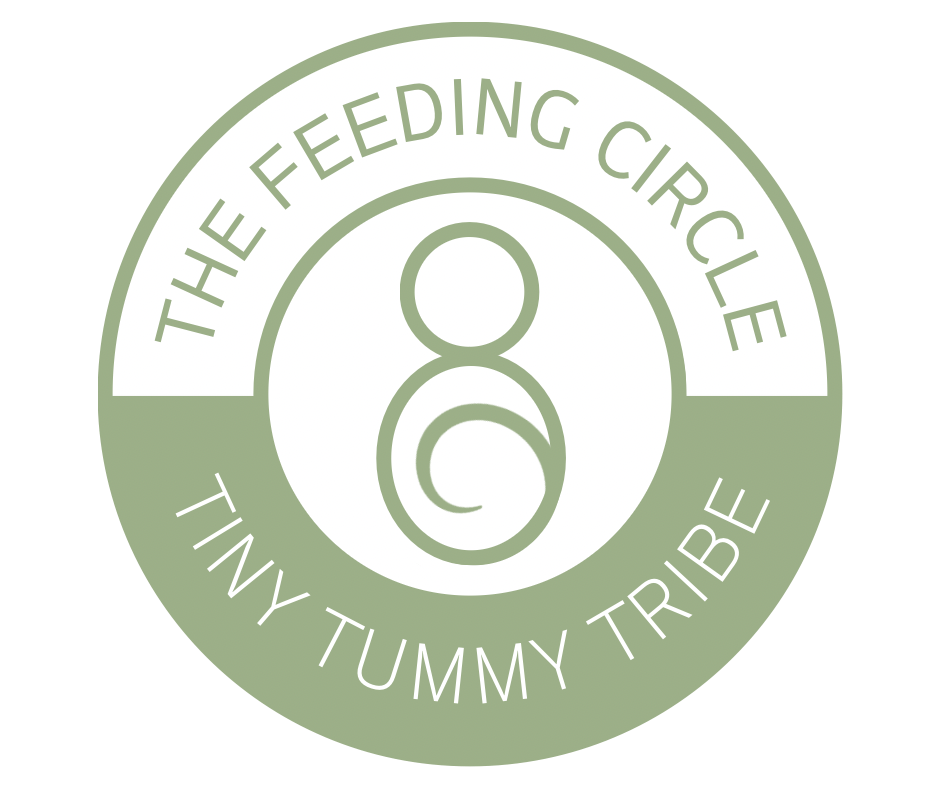Understanding Tethered Oral Tissues (TOTs): A Gentle Guide for Parents
At The Feeding Circle, we believe feeding your baby should be rooted in comfort, connection, and confidence. But what happens when feeding feels harder than expected, even when you're "doing everything right"? One often-overlooked cause of feeding struggles is tethered oral tissues—also known as TOTs.

What Are TOTs?
Tethered oral tissues (TOTs)refer to tight or restrictive oral connections like tongue ties, lip ties, or buccal (cheek) ties. These ties may limit movement, but it's not just how they look—it's how they function that matters most.
TOTs can impact:
- Breast/chest feeding or bottle feeding
- Milk transfer and latch quality
- Sucking, swallowing, and breathing
- Transitioning to solids
- Sleep and speech development
Why the Symptoms Can Be Sneaky
In the first days after birth, many babies are in a state of physiological tension from labor and delivery. As their nervous system unwinds, some signs of restriction or feeding challenges may begin to show up more clearly—especially when milk supply increases or feeding sessions grow longer.
A frenulum that seemed mild at birth may start to cause more noticeable problems around 2–4 weeks of age, which can be confusing and frustrating for parents.
TOTs Are Often Missed
Many medical providers aren't fully trained to assess the functional impact of oral ties. A quick look under the tongue during a newborn exam may not be enough to catch them. That's why a full functional feeding evaluation with a trained IBCLC (like our team at The Feeding Circle) is so important.
Signs Of Oral Tethering
Checking some of these boxes does not mean your baby has a tongue tie. Putting these symptoms together with a physical assessment are the key to identifying TOTs.
For the Baby: Signs of Possible Tongue, Lip, or Buccal Ties
Feeding Difficulties
- Poor or shallow latch
- Clicking, smacking sounds while nursing or bottle feeding
- Fussiness during feeds
- Prolonged feedings that don’t satisfy baby
- Choking, gagging, or coughing during feeds
- Excessive air intake, frequent burping or discomfort from gas (colic)
- Reflux-like symptoms (arching, spitting up, discomfort)
Growth & Output
- Decreased wet and dirty diaper counts
- Poor weight gain or slow growth
- Frequent feeds with minimal weight progress
- Falling asleep quickly at the breast or bottle, then waking hungry
Oral Function
- Bowl shaped, Heart-shaped, Notched tongue tip
- Tension in the jaw or facial muscles
- Tight or restricted lip or cheek movement
- Preference for bottle over breast
Body Tension & Behavior
- Stiff body posture, clenched fists
- Colic-like behavior or persistent crying
- Tension of neck/shoulders
- Asymmetry in body, head turning preferences, preferred side to feed on.
- Frequent hiccups
Other Signs
- Milk leaking from mouth during feeds
- Blistered lips
- High palate
- Mouth always open at rest
- Breathing noisily at rest or during feeds
For the Feeding Parent: Signs That May Indicate TOTs
- Painful nursing despite good positioning
- Cracked, bleeding, or damaged nipples
- Lipstick-shaped, compressed or blanched nipples after feeding
- Frequent recurring clogged ducts, mastitis or engorgement
- Oversupply or undersupply issues
- Pumping is easier than nursing
- Feeds feel exhausting or emotionally draining
- Feeling like feeding is never smooth or settled
The Role of a Functional Feeding Assessment
At The Feeding Circle, we look beyond appearances. Our assessments focus on how your baby uses their mouth to latch, suck, and swallow. We evaluate:
- Tongue Movement:
We assess your baby’s ability to elevate, lateralize (move side to side), and cup the tongue effectively — especially how well that cupping is maintained during jaw depression (a critical skill for efficient milk transfer). - Lip Function:
We observe lip flanging (how the lips turn outward), seal strength, and the ability to maintain suction without air leaks or slippage. - Jaw Stability & Coordination:
We check for jaw strength, rhythmic movement, and whether feeding fatigue sets in due to compensation or tension. - Milk Transfer at Breast or Bottle:
We assess how well your baby extracts milk — not just how long they feed, but how effectively they’re removing milk during each suck.
TOTs aren’t always the sole cause of feeding issues—but when present, they often contribute to a bigger puzzle.
Our Team-Based Approach
Feeding is a whole-body experience. If oral tissues are tight, we may also see body tension, poor posture, or compensatory habits that need support.
We collaborate with:
- Pediatric bodyworkers (CST, OT, PT)
- Airway-awareTOTs-trained release providers (dentists, surgeons)
Our goal is to ensure any recommended oral release procedure is:
- Functionally necessary
- Done with Pre Frenectomy body work for optimal outcomes
- Proper aftercare and follow-ups
- Part of a whole-body support plan
What You Can Do
If feeding feels frustrating or painful—or just doesn’t seem right—trust your instincts.
Here’s how to take the next step:
- Start with a functional feeding evaluation from a TOTs-informed IBCLC.
- Look for function, not just appearance—a small tie can still have a big impact.
- Support your baby’s body and mouth through gentle oral exercises or bodywork.
- Explore treatment options if needed but never feel pressured into a release without support.
You're Not Alone
Many families feel overwhelmed when first learning about TOTs. But with the right support, babies can go on to feed beautifully—at the breast, chest, or bottle.
At The Feeding Circle, we’re here to guide, educate, and support your journey every step of the way.
Reach out to us today to schedule a feeding evaluation or learn more about TOTs-informed care.


